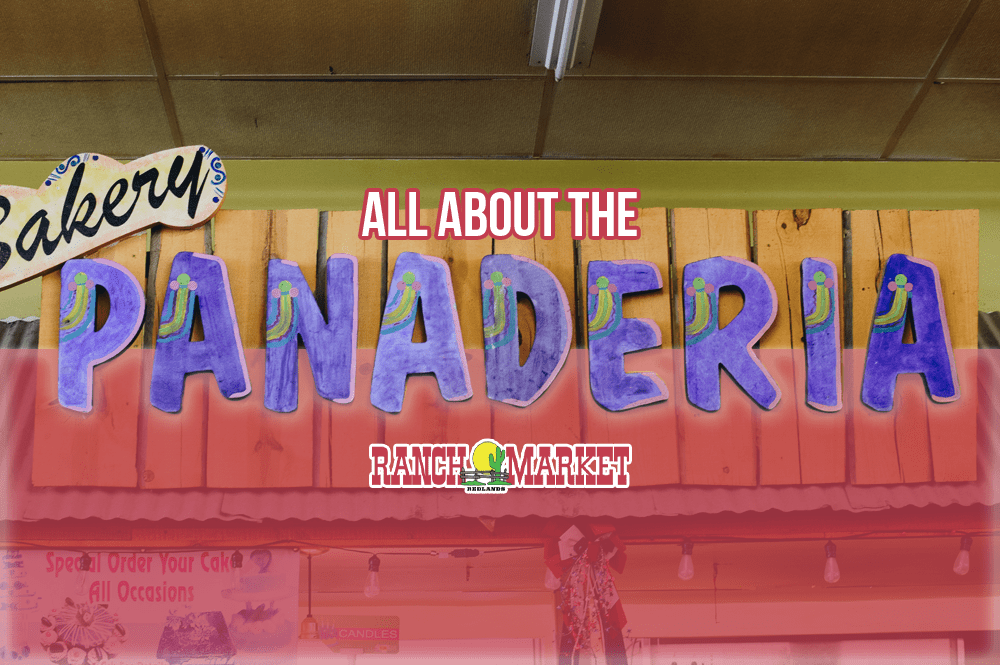Overview: Learn about your favorite Mexican bread and how Mexican bakeries came to be.
When you think of Mexican bread, you might think of the round, thick, sweet bread with crumbly “cookie icing” on top a shell-like pattern. But how did this delicious baked goods come to be? And what is the history of the panaderías? And how did this pastry end up on every bakery menu in Mexico, becoming popular even throughout the U.S.?
A Brief Introduction to Pan Dulce:
Known as pan dulce, or sweet bread, Mexican bread is so popular that the bakeries of these tasty treats are more plentiful in Mexico City than gas stations and grocery stores!
This is because the bread is multi-functional (you heard that right)! It serves as “breakfast, a mid-day bite known as la merienda, post-lunch coffee breaks, and pre-dinner snacks,” writes Daniela Galarza of Eater.
Interestingly, the history of Mexican bread has Spanish origins and is heavily influenced by the French. To get a better understanding of how pan dulce and the pandería came to be, we’ll have a sweet little lesson on history and religion to cover the following:
The History of Mexican “Bread” Pre-colonial Times
Wheat and the Catholic Church
Spanish Conquistadors in the Early 16th Century Mexico
True Mexican Panaderías Rise in Mexico
The Art of Making Mexican Pan Dulce (Recipe)
One thing to keep in mind: Though its origins are European, pan dulce is considered to be a Mexican cuisine. Let’s find out more about how the people of Mexico adopted this unique pastry to call their own.
PRE-COLONIAL MEXICAN "BREAD" VS. 16TH CENTURY SPANISH CONQUISTADORS:
Conchas is the name given to the sweet roll we’ve been referencing up to this point. It’s a cookie crust that’s shaped after its namesake, a seashell.
Before the Spanish arrived to Mexico in the early 1500s, Aztecs (and all native indigenous populations that lived in North America at that time) primarily ate meals consisting of corn, squash, and beans.
After conquering the ancient and thriving Aztec capital of Tenochtitlan, on what is now the Mexican plateau, the Spanish established Mexico City and designed it in the model of a little Spain.
But European architecture — think Catholic, gothic-style churches — didn’t just take the place of once-holy ancient pyramids. Food was replaced, too.
The traditional corn and tortillas that the indigenous people of Mexico City grew and ate for so long was disrupted. The increasingly present European population wanted a grain they knew from the Old World: wheat.
The Catholic Church vs. Maize:
Wheat was considered a religious necessity, as it was the only grain that the Catholic Church recognized was suitable for making Eucharist wafer, the unleavened bread used in the Christian ritual of the Eucharist..
The indigenous population at first did not desire wheat, as many believed that it tasted bland (fair enough), but it wasn’t until someone was seen dipping their bread in hot chocolate that others around Mexico quickly caught on and turned it into a custom.
Simply put: Dipping the bread into the sweet drink tasted better than the bread alone. And it’s safe to say the people of Mexico never looked back.
>> READ MORE: De Alba Bakery’s “The History of Pan Dulce”
THE FRENCH OCCUPATION IN THE MID 1800S
Brioche-like doughs exist all over Europe, and this bread base is the most likely origin of Mexican conchas.
While the earliest “pan dulce” (standard bread) first arrived in Mexico after Spanish conquistadors introduced wheat in the early 16th Century, the Mexican pan dulce we know and love today rose to popularity during the French occupation in the mid 1800s.
By the 17th century, French bakers began migrating to Mexico and opening bakeries and bringing with them the traditions of French baking. This signaled the advent of pan frances, or crusty baguette-like rolls which are still served throughout Mexico today.
It’s likely that French pastry chefs brought over their recipes for brioche, a sweetened and enriched dough made from wheat flour, yeast, salt, sugar, milk or water, eggs, and butter.
>> READ MORE: Panaderia La Central’s “Exploring the History of the Concha”
Through the intermingling of Mexican ingredients and the techniques brought over by the French, true Mexican panaderías popped up all over Mexico.
TRUE MEXICAN PANADERÍAS IN MEXICO
Panadería is the Spanish word for bakery. The French influence took hold in Mexico in the 19th century and were defeated in 1862, but left behind a taste and appreciation for rich pastries, as well as their art of bread making.
This is eventually what helped to establish the Mexican baking tradition that has become one of the most inventive in the world.
Many Mexican panaderías sprouted up throughout Mexico as panaderos, or bakers, went on adopting a variety of French techniques in making dough (that’s why much of pan dulce today resembles French pastries). However, their flavor and texture are often different.
Adding Mexican Technique to French Tradition:
Mexican ingredients such as corn flour, piloncillo (raw sugar cane), chocolate and vanilla as well as native fruits (pineapple, guava) and native vegetables (sweet potato, pumpkin) were added to some of the breads to make the pan dulce we’re familiar with today.
It’s admirable that the Mexican panaderos took traditional French techniques and tastes and began creating new bread designs with names that were associated with their appearance. Some of these include: marranitos (piglets); conchas (seashells); and moños (bowties).
And as the invention of pan dulce in Mexico took off, other culturally significant breads were created in order to celebrate occasions and traditions, such as Pan de Muerto, buñuelos and Rosca de Reyes.
You can read about Rosca de Reyes in this article: “3 Deliciously Unique King’s Day Bread Recipes For Día De Los Reyes.”
RECIPE: THE ART OF MAKING MEXICAN PAN DULCE:
At present, scholars estimate there might be as many as 2,000 different types of pan dulce in Mexico. Imagine sleeping on a bed made of 2,000 unique pan dulces — ah, the things we can dream up!
>> READ MORE: The Other Side of the Tortilla: Guide to Mexican Pan Dulce
It is difficult to resist the enticing aroma of freshly baked bolillos (French rolls) and pan dulce (sweet bread). So here’s a simple recipe that you can make in your kitchen so you can grab a bite of that fresh-baked sweet treat whenever you crave it.
Prep Time: 10 minutes | Cook Time: 18 minutes | Rise time: 2 hours 30 minutes | Total Time: 2 hours 58 minutes | Servings12 servings | Calories348kcal
For the Dough:
- 1 package dry yeast or 1 tablespoon
- 3/4 cup milk
- ½ cup butter melted
- 1/2 cup sugar divided
- 3 eggs room temperature
- 1 teaspoon salt
- 1 tsp vanilla extract
- 4 1/2 cups flour
For the Topping:
- 1/2 cup unsalted butter very soft
- 1 cup powdered sugar
- 1 cup flour
- 1 tbsp vanilla extract
- Optional: food coloring cocoa powder cinnamon
Instructions (Dough):
Warm your milk to about 110F then transfer to the bowl of your stand mixer or a large bowl if using an electric hand mixer. Mix in half the sugar and the yeast. Set aside for about 5 minutes or until the yeast is nice and bubbly. No bubbles mean dead yeast so you’ll have to start over if this happens.
Whisk in the eggs, vanilla, salt and remaining sugar then whisk in half the flour to create a smooth paste.
Add the melted butter and mix once more then place on your stand mixer add the remaining flour and attach a dough hook. Run the mixer on medium speed for 5-7 minutes or until the dough comes together, is smooth and will not stick to your finger when pressed lightly. You can sprinkle a couple teaspoons of flour on the edge of the bowl to discourage the dough from sticking.
Transfer the dough to a large lightly oiled bowl then cover and place in a warm place to rise for one and a half to two hours, or until doubled in size.
Instructions (Toppings):
Mix the flour and powdered sugar together in a medium bowl then add the butter and vanilla. Work together with a spatula or your clean hand until a smooth paste forms. You can divide the mixture into batches and flavor with ½ tsp cinnamon, 1 tbsp cocoa powder, etc. A few drops of food coloring can be worked into the batched for some visual interest if desired.
Baking:
Lightly flour your counter and invert the dough onto it then divide into 12 equal pieces, about 90g each. Place your thumb and middle finger together then cup the dough in your hand and move in small circles on the (unfloured) counter to create a roll shape. Place six rolls onto each baking sheet lined with parchment paper.
Portion out 1 ½ tbsp balls of the topping, about 30g. Flatten into thin disks large enough to cover your buns then place over the bun. Use a very sharp knife to cut the Concha pattern into the top. You can also cut a grid, or any other pattern you enjoy.
Cover loosely with plastic wrap and allow your conchas to rise for about 30 minutes or until roughly doubled in size. Preheat oven to 350F.
Bake at 350F for 18 to 20 minutes or until the bottoms are golden.
For the full recipe by Preppy Kitchen, including additional tips, tricks, and notes, click this link.
And to read more about the art of modern-day pan dulces such as the different types found in bakeries around Mexico, click here.
IN CONCLUSION:
Traditional Mexican bakeries use a modified form of self-service where customers grab a pair of tongs and a tray and step up to the cases filled with bread. They pick them up with the tongs and set them on the tray. After they choose their bread, they take the tray to the counter where the clerk will wrap and ring up their purchases.
Mexican pastries are best enjoyed with family or friends. Preservatives and artificial ingredients are not used in traditional Mexican baked goods so the products should be eaten within two days.


